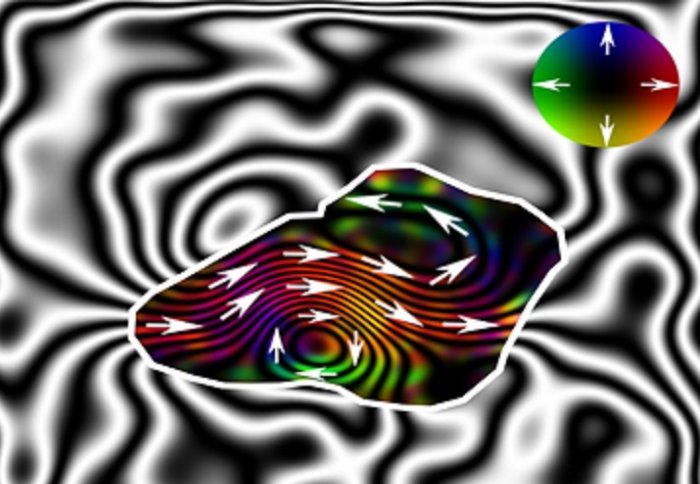

A paper published in Nature Communications by ESE's Dr Trevor Almeida and Dr Adrian Muxworthy and collaborators
In a paper published in Nature Communications, ESE’s Dr Trevor Almeida and Dr Adrian Muxworthy and collaborators, directly image the effect of oxidation (weathering) on the magnetic recording fidelity of naturally occurring nanoparticles. The study finds that some nanoparticles retain their initial magnetic recording even after weathering.
Rocks often contain millions and millions of tiny iron oxide nanoparticles. Of these, magnetite is the most magnetic type of iron oxide and as such acts as an important magnetic mineral to Earth scientists. Palaeomagnetists use the magnetic signals recorded by these tiny particles to study of the history and behaviour of the Earth's magnetic field. Magnetic minerals obtain the signal from the Earth’s magnetic field at the time of their formation. However, over the hundreds to millions of years since the signal acquisition they’re exposed to all sorts of weather and environments. Not much was known about the effects of weathering on the magnetic signal of the nano-sized minerals and these effects are often considered negligible or generally ignored, until now.
ESE scientists Dr Trevor Almeida and Dr Adrian Muxworthy, along with collaborators from: the Universities of Edinburgh, the University of Nottingham, the Technical University of Denmark (DTU) and Jülich Forschungszentrum in Germany, have conducted the first experiments that directly visualise the weathering effects on the magnetisation of nano-scale magnetite particles.
In order to look at these small nanoparticles they used a type of electron microscope so powerful that they can image individual atoms. Rather than using light, these microscopes use a focussed beam of electrons to magnify the sample, called a transmission electron microscope (TEM). This type of microscope typically requires the sample to be under high vacuum conditions. However, at the Center for Electron Nanoscopy (CEN) at the they have the capability to not only examine these tiny particles under a flowing gas environment within an advanced TEM, but do so whilst heating. CEN houses another type of advanced TEM that can apply a technique called electron holography to visualise the magnetic fields around nano-scale materials, much like using iron filings around a bar magnet, but on a much smaller (nanometric) scale.
Researcher Dr Trevor Almeida combined these two TEM techniques, to directly re-create weathering conditions within a high-powered microscope and visualise the effects on the magnetic signal of minerals, on the nano-scale, for the first time. He found that some individual magnetic grains retained their original magnetic orientation albeit with a reduced magnetic strength, and hence their magnetic recording fidelity remains partially intact. These new results, published last week in Nature Communications, provides fundamental insight into the effect of chemical alteration on magnetic recording fidelity of the strongest magnetic mineral in the most commonly occurring size range, and acts as a significant step forward towards better understanding of the complex palaeomagnetic record of the geomagnetic field.
Article text (excluding photos or graphics) © Imperial College London.
Photos and graphics subject to third party copyright used with permission or © Imperial College London.
Reporter
Chao Ning
Department of Earth Science & Engineering

Contact details
Email: press.office@imperial.ac.uk
Show all stories by this author



